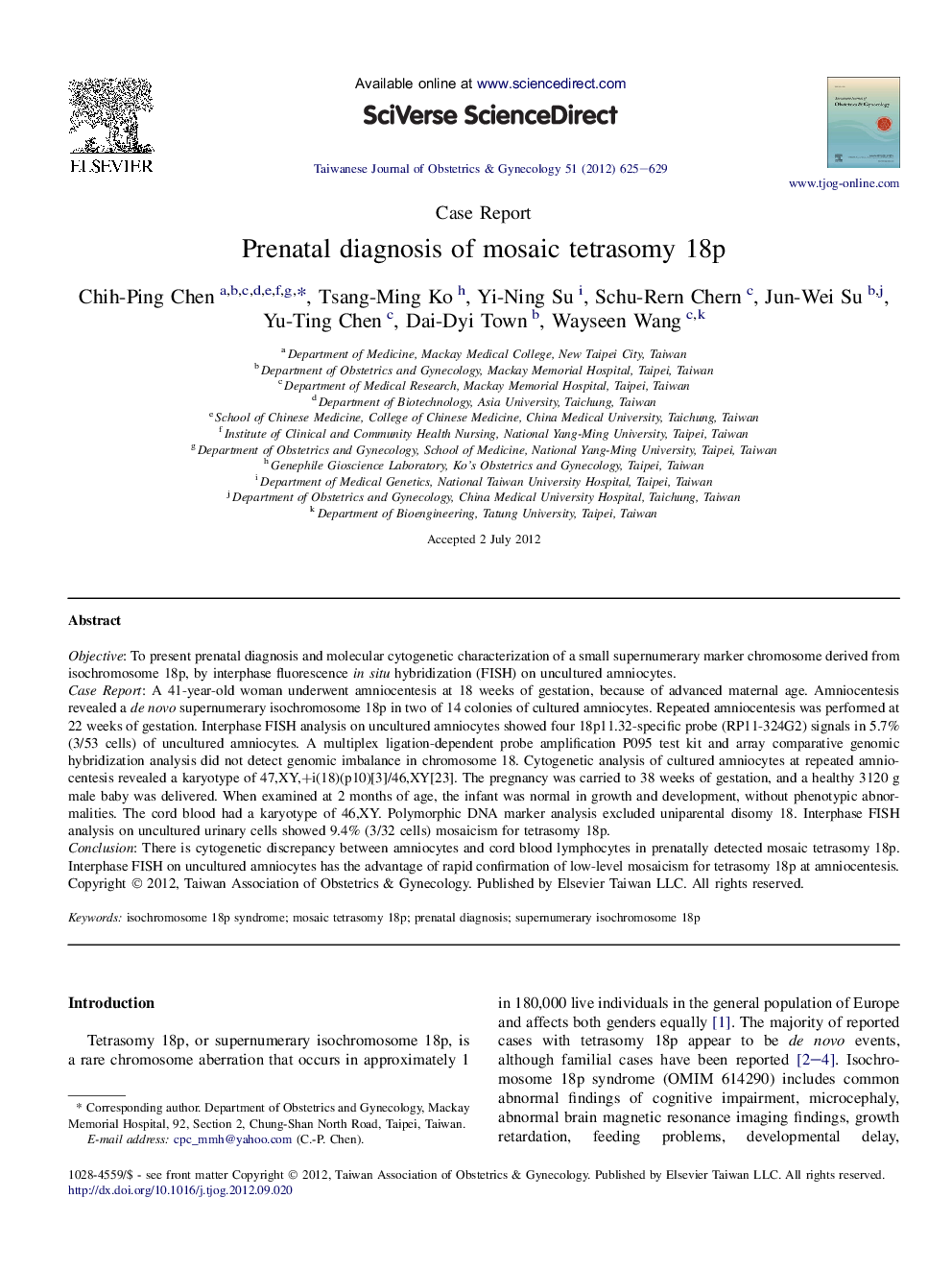| Article ID | Journal | Published Year | Pages | File Type |
|---|---|---|---|---|
| 3975654 | Taiwanese Journal of Obstetrics and Gynecology | 2012 | 5 Pages |
ObjectiveTo present prenatal diagnosis and molecular cytogenetic characterization of a small supernumerary marker chromosome derived from isochromosome 18p, by interphase fluorescence in situ hybridization (FISH) on uncultured amniocytes.Case ReportA 41-year-old woman underwent amniocentesis at 18 weeks of gestation, because of advanced maternal age. Amniocentesis revealed a de novo supernumerary isochromosome 18p in two of 14 colonies of cultured amniocytes. Repeated amniocentesis was performed at 22 weeks of gestation. Interphase FISH analysis on uncultured amniocytes showed four 18p11.32-specific probe (RP11-324G2) signals in 5.7% (3/53 cells) of uncultured amniocytes. A multiplex ligation-dependent probe amplification P095 test kit and array comparative genomic hybridization analysis did not detect genomic imbalance in chromosome 18. Cytogenetic analysis of cultured amniocytes at repeated amniocentesis revealed a karyotype of 47,XY,+i(18)(p10)[3]/46,XY[23]. The pregnancy was carried to 38 weeks of gestation, and a healthy 3120 g male baby was delivered. When examined at 2 months of age, the infant was normal in growth and development, without phenotypic abnormalities. The cord blood had a karyotype of 46,XY. Polymorphic DNA marker analysis excluded uniparental disomy 18. Interphase FISH analysis on uncultured urinary cells showed 9.4% (3/32 cells) mosaicism for tetrasomy 18p.ConclusionThere is cytogenetic discrepancy between amniocytes and cord blood lymphocytes in prenatally detected mosaic tetrasomy 18p. Interphase FISH on uncultured amniocytes has the advantage of rapid confirmation of low-level mosaicism for tetrasomy 18p at amniocentesis.
